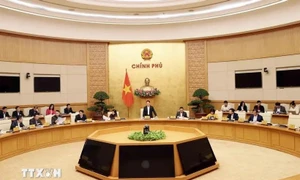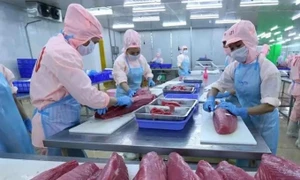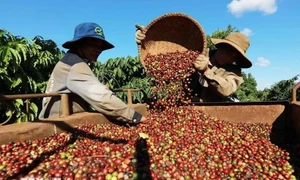
Nguyen Anh Phong, Deputy Director of the Institute of Policy and Strategy for Agriculture and Rural Development, pointed out that Vietnam is a big exporter of agricultural products, but the majority of its agricultural production is of small scale and scattered, making it hard for purchasing farm produce in bulk. Besides, the long and narrow shape of the territory leads to high demand for logistics services to gather, preserve, and transit farm produce in main production zones.
The trend of large-scaled agricultural production and the increasing diversity of products have also boosted demand for logistics services in the agro-forestry-fishery sector, he noted, highlighting improvements in logistics infrastructure in recent years such as roads built to link with rural areas and ports, markets upgraded, and such services as transport, preservation, storage, classification, and packaging diversified.
However, Phong added, agricultural value chains in Vietnam are still facing many logistics problems, including high expenses, infrastructure development unable to keep up with real demand, and limited service supplying capacity. In particular, logistics expenses currently account for 12% of the production costs for aquatic products, 23% of that for wood products, 29% of fruits and vegetables’, and 30% of rice’s. The expenses in Vietnam are respectively 6%, 12%, and 300% higher than those of Thailand, Malaysia, and Singapore.
Besides, transport infrastructure has not met farm produce transport demand, agro-forestry-aquatic products have still been transported mainly by road, logistics centres have not been connected with one another, most logistics businesses are small and have not been connected in chains, and the logistics system for cross-border trade has yet to develop on par with its potential and real demand, he said.
Sharing the view on the growing importance of logistics to the improvement of added value and quality of Vietnamese agricultural products, Deputy Minister of Agriculture and Rural Development Tran Thanh Nam attributed current shortcomings partly to the shortages of a long-term strategy and support policies for agricultural logistics development.
To turn logistics into an impetus for agricultural development, it is necessary to form a comprehensive and effective logistics service system to help raise the quality, added value, and competitiveness of Vietnamese farm produce. Therefore, it is critical to build and implement a plan on the work by 2030 to tackle existing bottlenecks and facilitate agro-forestry-aquatic product exports, he continued.
Tran Chi Dung, head of the technology and innovation division of the Vietnam Logistics Business Association, suggested implementing three projects: establishing a cross-border land logistics chain for agro-forestry-aquatic products that connects Vietnam, Laos, Cambodia, and China; forming a logistics infrastructure chain that is combined with e-commerce and multimodal transport; and setting up an air logistics chain linking the ASEAN and Chinese markets
He held that Vietnam has seven economic regions with different production and infrastructure conditions as well as different demand for market connection. The design and building of regional logistics centres require thorough consideration and assessment to ensure projects are effective and meet development demand in the long term.























